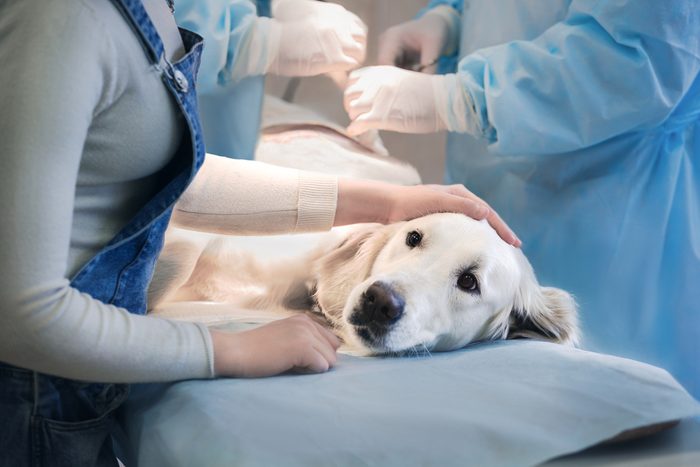
Is there a doc in the house?
The cost of owning a dog is arguably worth it for a furry friend. But dog owners pay around $800 annually in veterinary costs, according to a recent National Pet Owners Survey conducted by the American Pet Products Association (APPA). Basics like flea and tick protection are a given, but an unplanned vet visit due to injury or illness can be costly. (Don’t forget to keep an eye out for these vet red flags.) Amy Nelson of Catonsville, Maryland is considering pet insurance after a recent scare when her puppy, Blue, suddenly stopped eating and became lethargic. “The vet, who seemed alarmed by Blue’s lethargy, expressed concern that she might have ingested something or be very sick,” she recalls. Blood work, X-rays, and $550 later, nothing conclusive was found, but happily, Blue got better. “In the end, I’d say the peace of mind was worth it,” says Nelson. When she wasn’t yet paying for insurance, fear was the emotional cost of owning a dog. Rob Jackson, co-founder and CEO of Healthy Paws Pet Insurance, says if Amy had had pet insurance, Blue would have been covered “for all accidents, injuries, and illnesses, barring any preexisting conditions.” Monthly plans with most pet insurance companies start at around $20 per month. When it comes to your pet’s health, know whether or not you should neuter.
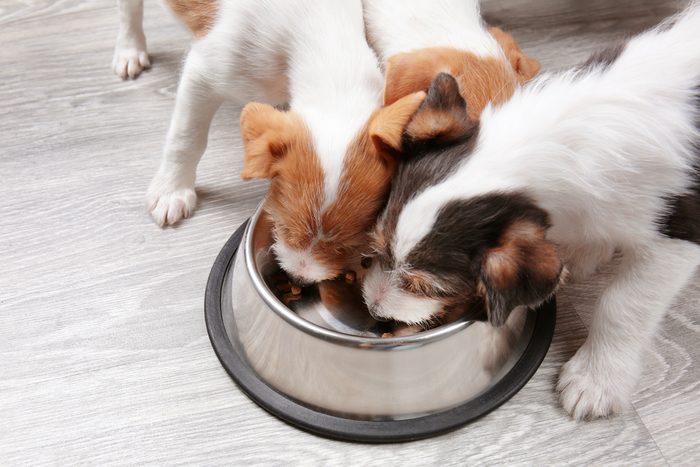
Kibble and treats
Dog owners spend an average of $200 on kibble and $75 on treats per year, with that number going up for larger dogs. “While pricey foods tend to have higher-quality ingredients, like in human food, you need not overspend to buy dog food,” says Kristen Levine, pet expert and blogger at Kristen Levine Pet Living. Check with your vet about the specific needs of your pup, and then shop according to your budget. Buying dog food in large quantities and properly storing it to keep it fresh will help defray the costs. As far as those tempting treats, try making your own. “Look to a reputable source for healthy pet recipes or use only ingredients you know are okay for your pet to ingest,” recommends Levine. Check out these pet products you can make at home to save some cash.
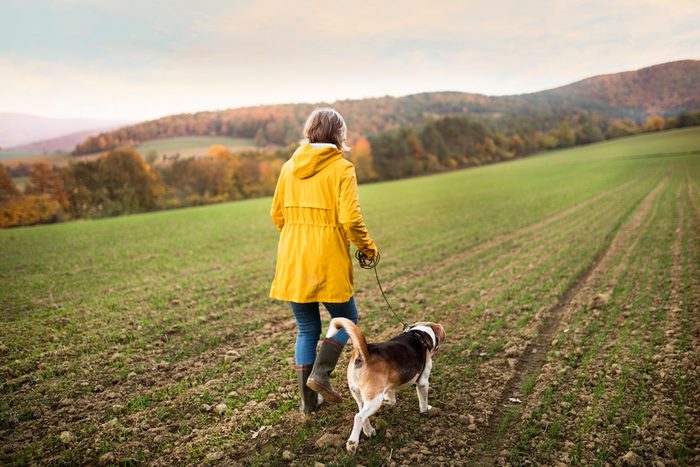
These paws were made for walking
Exercise is not only good for your pup’s health, but it also helps with behavior issues. Dogs that aren’t walked enough get bored and, as a result, chew on your new boots (increasing your annual pet-owning costs). Tonya Wilhelm, a natural and holistic dog training expert at Raising Your Pets Naturally, recommends two to three daily walks to develop and maintain their socializing, bonding, and leash skills. Keep in mind that puppies need more potty breaks. “A puppy can typically go three to four hours while sleeping inside his crate before needing to go outside to relieve himself,” notes Wilhelm. Since Mama (or Papa) needs to work, daily walks from a professional dog walker may be a necessary expense to consider before getting a dog. Depending on the city where you live, one daily walk can range from $10 to $20. That can add up quickly. Options for cutting down the cost of owning a dog are shooting home for lunch to walk your dog, working from home occasionally, or taking your dog to work. Surprisingly, some employers do allow furry colleagues.
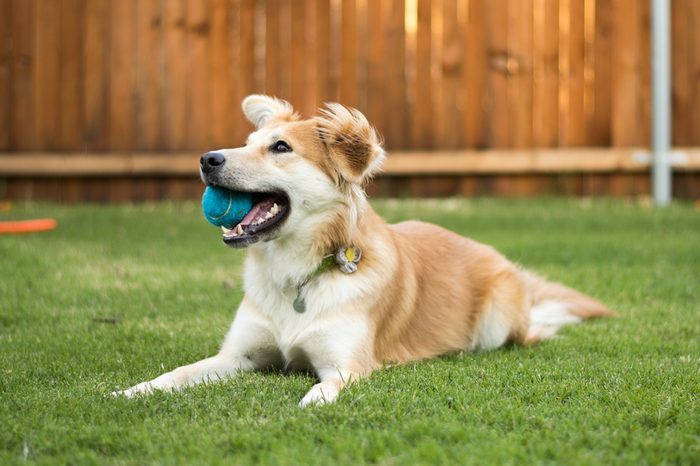
Ain’t no party like a tail-waggin’ party
The cost of owning a dog includes more than just food and doctor visits. According to CostHelper.com, the average cost of doggy daycare is between $12 to $38 for a full day or $240 to $550 per month. If you work long hours, this may be a better option than paying a dog walking service to come twice a day. Doggy daycare generally offers walking, playtime, and quiet times. “Doggy daycare is a great way to socialize your dog if you don’t already have a network of friends or neighbors with dogs,” says Shian Simms, DVM and Vice President of Veterinary Medicine at Bideawee Animal Shelter in Manhattan. “Dogs benefit from socialization with other dogs as they can help younger or under-socialized dogs learn how to play appropriately with other dogs.” Be on the lookout for these 10 silent signs your dog is actually depressed.
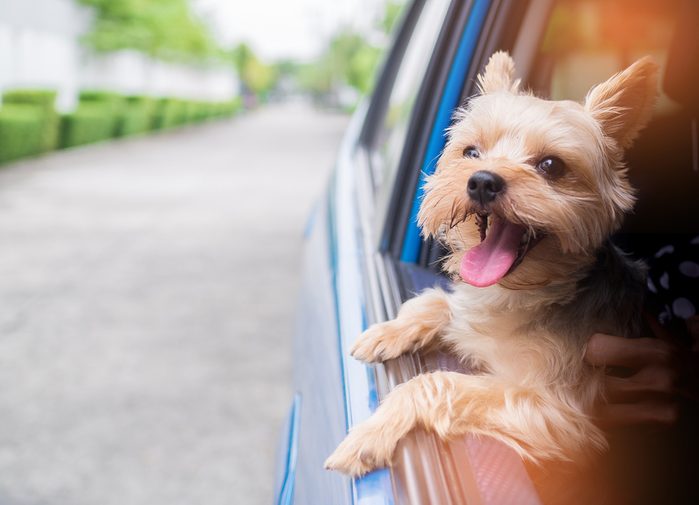
Have dog, will travel
We smile when we see a dog with his head out the car window. He sure looks like he’s enjoying the ride, but as much as we would like our dogs to enjoy the freedom of traveling with us, it’s not always safe. A sudden stop can injure him, or you can be distracted when he gets his head stuck under the seat sniffing out an old French fry. A harness is a necessary expense to keep your dog safe, whether it’s a trip to the local vet or a road trip to a pet-friendly national park. “A harness, in conjunction with a travel bag, helps to ensure the safety of the pet. Harnesses in general are best as they allow the pet parent more control while providing better comfort for the dog,” says Dr. Simms. For larger dogs that don’t fit in travel bags, get a detachable seat belt harness to keep pup safe on a road trip. Some travel bags even have the option to connect the harness to the bag.
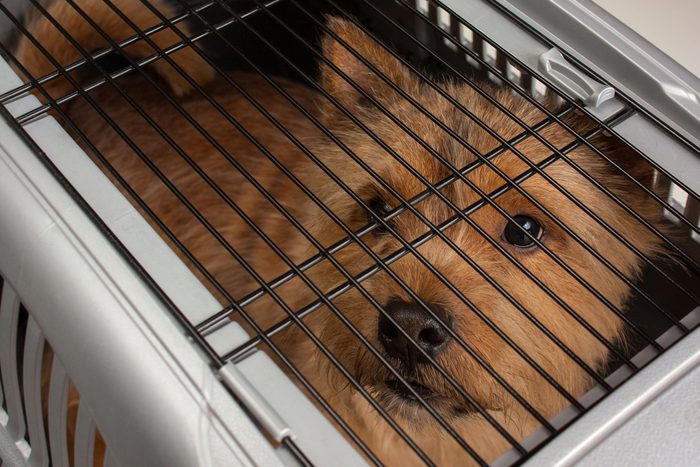
Animal house
There are many things we may not realize about dogs: A crate, for example, may seem cruel to some parents, but dogs like the security a crate provides—it’s like a cozy house. In addition to giving your pup a sense of security, crates are an asset for potty training, according to Travis Brorsen, Animal Planet’s pet expert, trainer, and host of the show My Big Fat Pet Makeover. Crates range from $40 for a small size to upwards of $100 for a larger size. Dog beds are typically used inside the crate, and they range from $30 to $50, depending on the size and materials used. To save some cash, choose a crate that will grow with your puppy. You can always make it cozy by adding blankets or a dog bed, keeping a towel over the top, and placing it in a quiet corner of your home.
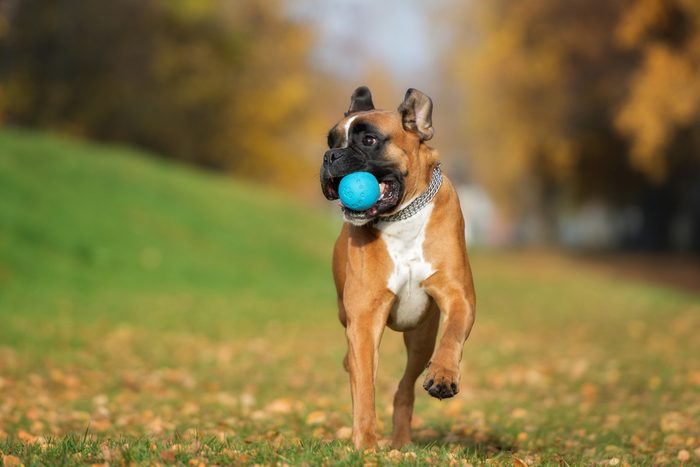
Because shoes aren’t toys
Another secret your dog won’t tell you: They don’t need a lot of toys. “Frankly, dogs are more interested in spending time with you than they are in toys,” says Levine. But of course, it wouldn’t be playtime without a few staples like a ball. “Choose a ball your dog loves and that is the right size for his mouth. He should be able to easily pick it up, but not swallow it,” says Levine. For mental exercise, choose a toy that dispenses treats as your fur baby plays with it. The survey from APPA reported that dog owners spend about $50 annually on toys. That’s a conservative figure for some parents, like Molly Onken of Baltimore. “I pay $25 a month for BarkBox plus another toy or two from a local pet shop,” says Onken. She adores her mini Goldendoodle, Flo, to whom she lovingly refers as her child. “It gives me great joy to see her play and have fun with her toys.” If you’re looking to cut the cost of owning a dog, set a toy budget. Check out these 30 other things your dog wishes you knew.
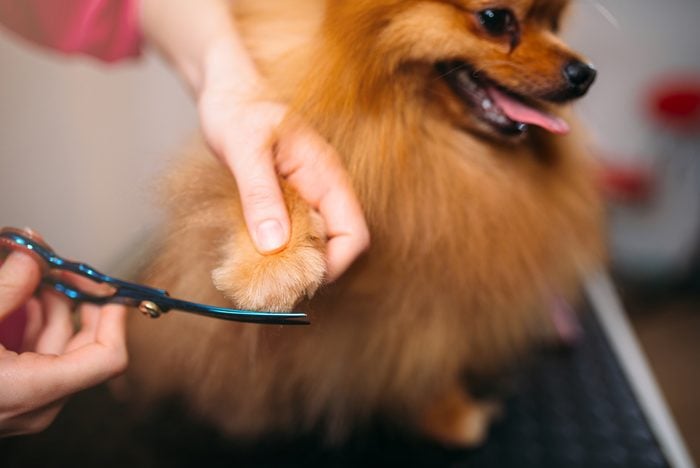
Wags and suds
It’s hard to resist the cozy factor of some breeds, like the Bichon Frise, that don’t shed. But that soft and fluffy coat is actually made from hair, not fur, so it requires monthly grooming. Other breeds with short hair or fur usually require very little professional grooming. According to APPA, the average amount owners spend on grooming is $200. This varies greatly depending on the breed. Grooming encompasses tasks such as bathing, trimming and cutting fur, and cleaning and clipping nails. You can save on some grooming costs by bathing your dog at home or taking him to a dog wash station at your local pet store. However, clipping nails or trimming fur is a frightening prospect for some owners and probably best suited for the groomers.
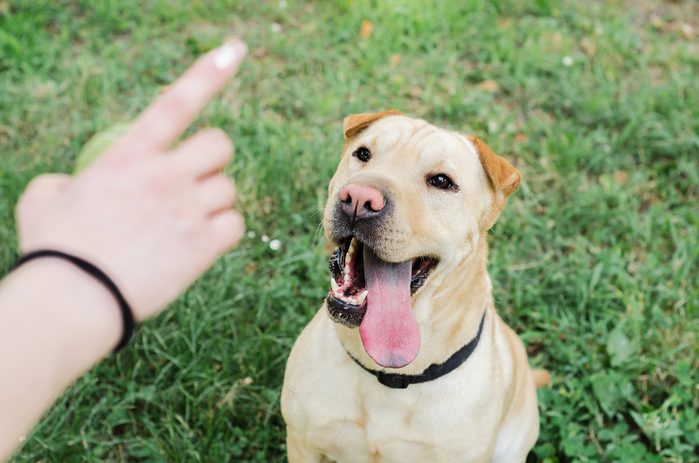
K-9 kindergarten
“Sit, stay, and come are the three basic obedience commands that every dog should know,” says Brorsen. You can attempt to teach your pup a few simple commands by reading books or watching YouTube videos, but the application isn’t always as easy as it looks. It may be a lot less frustrating and time-consuming to sign up for a group training class at your local pet store or seek out a reputable dog trainer. “By taking classes, you can prevent many issues before they arise. Group classes are more affordable than private lessons, and I recommend all dog owners at least enroll in a puppy class for socialization,” says Brorsen. Chain pet stores offer group classes for around $100. “It is very important your puppy is socialized in the first seven months of age. This is a critical time for your dog to adapt and learn how to properly socialize with other dogs. It’s also good for the owners to learn what is proper play and what is too much,” says Brorsen. Here are 15 more essential things you need for your new puppy.
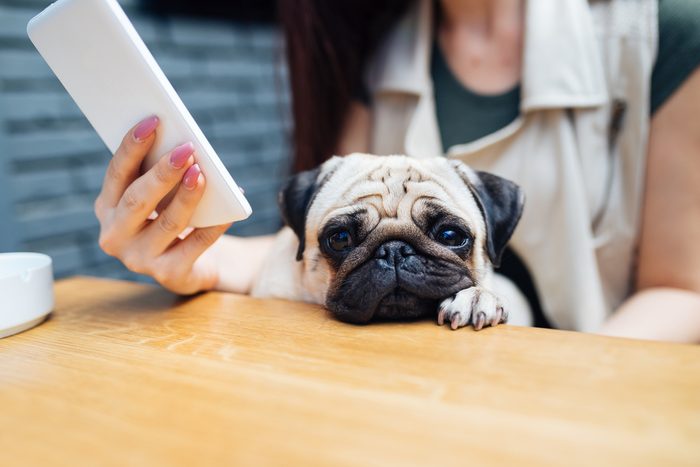
Lead me not into debt
A harness, leads, collars, grooming supplies, seat belts, feeding stations, seat covers for the car or sofa, doggy sweaters, and even life jackets are just a few miscellaneous expenses that add to the cost of owning a dog. To determine how much this may cost you—at least in the first year—consider the lifestyle you will have with your dog. How will she live in your home? Do you need a dog bed or will an old blanket suffice? If you plan on traveling a lot, consider the cost of a harness or travel carrier. Most importantly, research the breed you’re considering. Purebreds, in general, are inclined to have more health issues because they’re usually bred from a limited gene pool. High maintenance dogs like border collies require a lot of exercise. The Cavalier King Charles Spaniel is especially prone to mitral valve disease. Each breed has its own issues; you just have to decide if those issues are deal-breakers. “Be proactive and do your research before getting a dog so your pup becomes a loving member of the family, not an additional burden in your life,” advises Brorsen. Next, don’t miss these 53 mistakes every dog owner makes.
